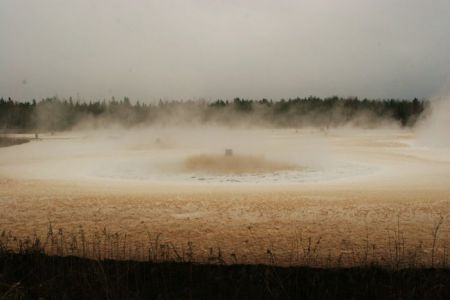(K'JIPUKTUK) HALIFAX - What comes to mind when Jonathan Beadle thinks of environmental justice are not visions of pristine lakes and lush green trees, but rather the death of his cousin.
The member of the Pictou Landing First Nation believes the wide-spread illness in his community is connected to the toxic wastewater the Northern Pulp Abercrombie Paper Mill has been dumping into Boat Harbour, a quiet lagoon which borders his reserve, for almost 50 years.
“In my community we have 70 million litres of effluent dumped into basically our backyard. In that effluent there are toxins that would kill anybody, I don’t care how healthy you are.”
“Boat Harbour is literally in my community’s backyard,” Beadle said.
An estimated three trillion tons of wastewater has gone into the estuary since 1967, which at one time was used as a traditional fishing spot for the local First Nations. In 2008, the Province promised to clean up Boat Harbour and made a commitment to move the wastewater somewhere else — but the effluent has continued to flow.
In June, a pipe carrying raw effluent from the mill broke, leaking toxins into the untreated waters of Pictou Harbour, spurring residents to set up a blockade to prevent the mill from operating.
“It just seemed like people refused to listen,” Beadle said of the spill.
On Tuesday, he spoke to a crowd of nearly 200 people gathered at Dalhousie University about the impacts of environmental racism. The event, organized by the Environmental Noxiousness, Racial Inequities and Community Health Project and the Nova Scotia Public Interest Research Group, was to raise support for environmental justice in African Nova Scotian and Mi’kmaw communities.
Environmental racism is defined as the placement of toxic industries and other environmental hazards close to low-income and racially marginalized communities.
Speakers at yesterday's event explained the province has a long, often untold history of environmental racism, from the devastation of Africville to the on-going struggle with Boat Harbour.
Annie Clair, a resident of Elsipogtog First Nation in New Brunswick told her story as a young girl who grew up swimming in the waters around her home. Now, she said, those same waters are too polluted for the children in community swim.
“We’re all brothers and sisters, and we all have the same responsibility to protect Mother Earth. You drink the same water we do,” Clair said.
To raise awarness about environmental racism, event organizers are hoping to form an action group in the next two weeks that will begin planning different campaigns.
Follow @__stephanietaylor
Annie Clair is a contributor to the Halifax Media Co-op and Miles Howe, who is a part of the editorial collective, was one of the facilitators at the event.



